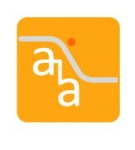Wie parken wir morgen?
Angesichts der üblichen 40-jährigen Nutzungsdauer von Parkhäusern steht in vielen deutschen Städten die Entscheidung bevor, wie öffentlicher Parkraum zukünftig genutzt werden soll: Lediglich Parkraum für Fahrzeuge bereitstellen oder Lade- und Tanksysteme für verschiedene Verkehrsmittel integrieren? Oder sollten andere Dienstleistungen angeboten werden? Das Forschungsprojekt „Mobilitätszentren der Zukunft“ adressiert diese Lücke mit einem Leitfaden für einen Multimodalhub, der die Randbedingungen zur verstärkten Vernetzung der Verkehrsmittel und neue Mobilitätsangebote für Personen und/ oder Güter schafft.
Die Frage nach der zukünftigen Nutzung oder der mögliche Ersatz für die in den 70iger und 80iger Jahren gebauten Parkhäuser steht bei vielen mittelgroßen Städten auf der Agenda. Mit der zunehmenden Heterogenität der Mobilitätsnachfrage (z.B. Intermodalität, „Nutzen-statt-Besitzen“-Ansätze) und immer kürzeren Innovationszyklen in der Fahrzeugentwicklung und Antriebstechnik (z.B. Elektromobilität, alternative Kraftstoffe, autonomes Fahren) werden die bestehenden Parkhauskonzepte zukünftig nicht mehr geeignet sein, um die Mobilitätsbedürfnisse der Bevölkerung zu decken. Traditionelle Parkhauskonzepte – nämlich die Bereitstellung von Parkraum für den motorisierten Individualverkehr – sind dann, so zumindest die Annahme, mit erweiterten Angeboten zu kombinieren. Darüber hinaus offerieren der demographische Wandel und die Digitalisierung neue Chancen, die auch in Parkraumkonzepte zu integrieren sind. Aus diesen Gründen sollte der Neu- bzw. Ersatzbau von bestehenden Parkhäusern neue architektonische, verkehrsplanerische und gebäudetechnische Ansätze nutzen, um eine Nutzung bis ins Jahr 2060 zu ermöglichen.
Das Projekt „Mobilitätszentren der Zukunft“ beschäftigt sich genau mit diesem Aspekt. Ziel ist es, einen Leitfaden für einen sogenannten Multimodalhub zu erarbeiten, der die zuvor genannten Anforderungen erfüllt. Ein „Mobilitätszentrum“ bzw. einen „Multimodalhub“ wird hierbei als multimodaler Verkehrsknotenpunkt verstanden, der in Form eines Gebäudes verschiedene Parkmöglichkeiten, Lade- und Tanksysteme, diverse Dienstleistungen (z.B. Ausleihservice, Paketstationen und Paketdepots) und weitere Nutzungseinheiten (z.B. Behördenaußenstellen, Bürgerberatung) kombiniert.
Inwiefern alle Nutzungsmöglichkeiten in einem Multimodalhub realisiert werden können, hängt sicherlich von den individuellen Gegebenheiten vor Ort ab. Doch die Projektbeteiligten sind optimistisch. „In diesem Projekt müssen wir die Innovationsvielfalt mit der Anforderungs- und Lösungsseite kombinieren – und zwar bevor eine umfassende Sensibilisierung von Parkraumbereitstellern stattgefunden hat“, sagt Projektleiterin Prof. Susanne Schwickert. „Obwohl wir die genaue Zielrichtung und Entwicklung in den Feldern Mobilität und Verkehr heute noch nicht kennen, bin ich mir sicher, dass wir Planer, Ausführende und Betreiber von öffentlichem Parkraum mit diesem Projekt unterstützen können.“
Mehr Informationen zum Projekt finden Sie unter
Fragen können Sie auch gerne stellen an




































































